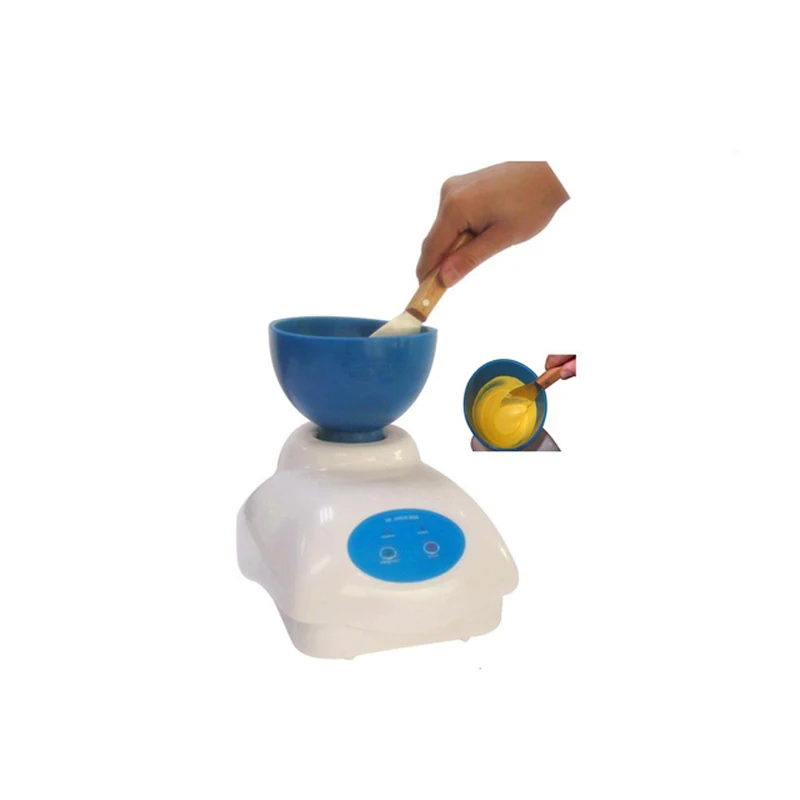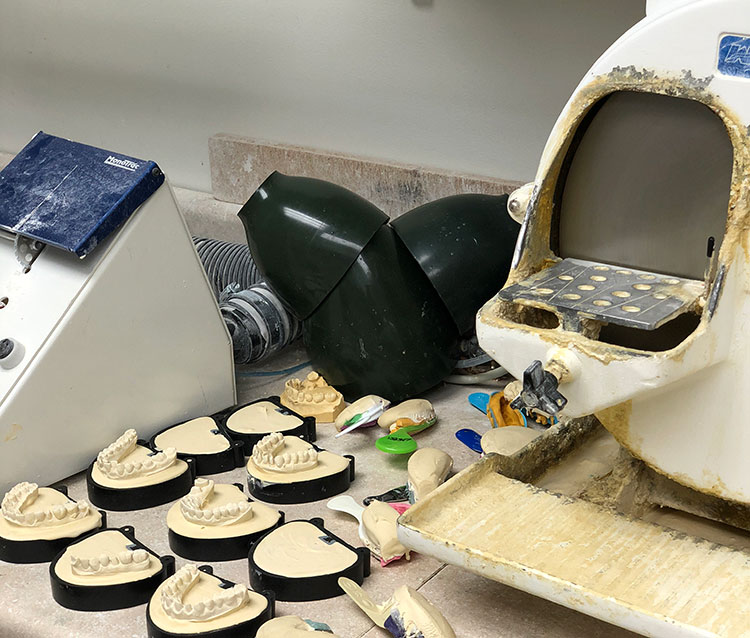
The above occurs due to the evaporation of the by- product of the condensation reaction.Dies produced from this material can be undersized.Can have pronounced shrinkage (poor dimensional stability).Will begin to shrink after one hour from removalĪlthough it is the least expensive elastomer, it is not well-liked by patients because of its unpleasant sulfide odor and long setting time in the mouth (about 10 minutes).Comes as two tubes of base and catalyst.Multiple pouring within 24 Hours after making impression.

#Stone dental impression free
It must be free of bubbles, especially in the area of the finish line and occlusal surfaces of the other teeth in the arch. Other teeth and tissue adjacent to the prepared tooth must be accurately reproduced to permit proper articulation of the cast and contouring of the restoration.ģ. It should be an exact duplication of the prepared tooth, including all of the preparation and enough un-cut tooth surface beyond the preparation to allow the dentist and the technician to be certain of the location and configuration of the finish line.Ģ. Requirements of an impression for a cast restoration:ġ.

If it becomes necessary to store the impression before a cast will be made, the polyethers and addition silicones are preferable because they exhibit sufficient long-term dimensional stability the other materials, particularly the reversible hydrocolloids, must be poured immediately. They will allow the cast to be accurately articulated (to check occlusion) and will contribute to proper contouring of the planned restoration. Used to make the final impressions for indirect restorations and implants.Īll teeth in the arch and the soft tissues immediately surrounding the tooth preparation must be reproduced in the impression. They are synthetic polymers with rubber properties after setting. © 2017 by the American College of Prosthodontists.WHAT IS NON-AQUEOUS ELASTOMETRIC IMPRESSION? Among additive manufacturing technologies, MJP2 presented the highest (64.3 ± 83.6), and MJP1 (21.57 ± 16.3) and DLP (27.07 ± 20.23) the lowest distortion, which was not significantly different from CDS (32.3 ± 22.73) (p > 0.05).įor the fabrication of the definitive casts for implant prostheses, one of the multijet printing systems and direct light processing additive manufacturing technologies showed similar results to conventional dental stone.Ĭonventional dental stone casts could be accurately duplicated using some of the additive manufacturing technologies tested.ģD printing additive manufacturing technologies definitive implant cast direct light processing technology implant prostheses inject technology multijet printing stereolitography technology. Regardless of the cast system, x-axes showed more distortion (42.6) compared to y- (34.6) and z-axes (35.97).

CDS method (x-axis: 37.1 z-axis: 27.62) showed a significant difference compared to DLP on the x-axis (22.7) (p = 0.037) and to MJP1 on the z-axis (11.0) (p = 0.003). Data were analyzed using ANOVA, Sheffé tests, and Bonferroni correction (α = 0.05).Ĭompared to CMM, the mean distortion (μm) ranged from 22.7 to 74.9, 23.4 to 49.1, and 11.0 to 85.8 in the x-, y-, and z-axes, respectively. Measurements were repeated 3 times per specimen in each axis yielding a total of 546 measurements. CMM was used to measure the correct position of each implant, and distortion was calculated for each system at x-, y-, and z-axes. Polymer casts (N = 20 n = 5 per group) were fabricated using 4 different additive manufacturing technologies (multijet printing-MJP1, direct light processing-DLP, stereolithography-SLA, multijet printing-MJP2). From this model, two types of casts were duplicated, namely conventional dental stone (CDS) using a custom tray impression technique after splinting (N = 5) and polymer cast using additive manufacturing based on the STL file generated. To compare the accuracy of implant analog positions on complete edentulous maxillary casts made of either dental stone or additive manufactured polymers using a coordinate measuring machine (CMM).Ī completely edentulous maxillary model of a patient with 7 implant analogs was obtained.


 0 kommentar(er)
0 kommentar(er)
